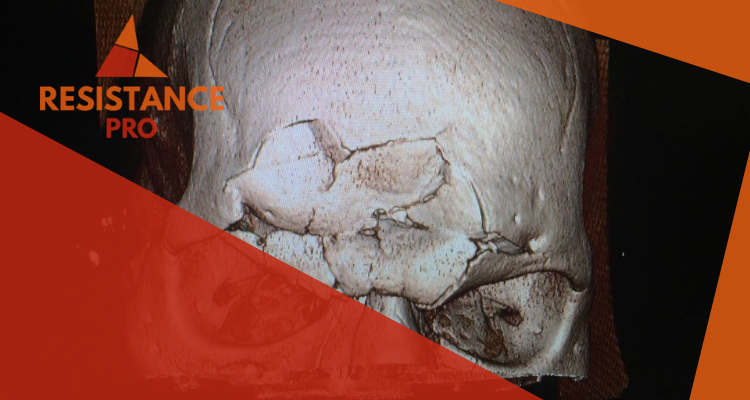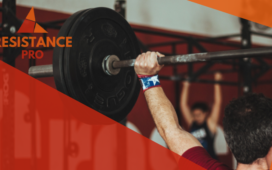Head injuries that are caused by a blow onto the head are commonly associated with extreme and dangerous sports including wrestling and MMA. In a wrestling match, the chances of you injuring your head is high as there will be dangerous moves and stunts. However, as a professional wrestler or MMA fighter, you need to know where is the worst place to hit your head so that you can consciously avoid it. In this article, I will share the different types of head injuries. I will also point out where is the worst place to hit your head that you should avoid.
TL; DR: The temple is the worst place to get hit on the head as there are arteries running beneath it.
Types of Head Injuries
Hematoma
Collection of blood clots outside of the blood vessels. This can be a grave danger if it occurs in the brain. The blood clotting leads to pressure building up inside of the skull which causes someone to lose consciousness or in other instances permanent damage to the brain.
Hemorrhage
It is the uncontrolled bleeding on the space around the brain called subarachnoid haemorrhage or intra-cerebral if bleeding is within the brain tissues.
Concussion
This happens when the impact caused on the head is severe enough to cause injury to the brain. This is thought to result in the brain hitting against the skull or due to forces of deceleration and acceleration of the brain bath fluid together with the brain. The loss of functions of the brain associated with concussions is temporary but if it happens repeatedly, it can lead to permanent damage to the brain.
Edema
Any brain injury can cause edema or swelling of the brain. Many injuries inflicted on the brain causes a swelling on the surrounding tissues but it becomes lethal affair when it happens on the brain because the skull can’t stretch to accommodate the swelling. The pressure will then build up against the walls of the skull which leads to death if nothing is done to relieve the pressure.
Skull fractures
The skull is different from other bones in the body. It doesn’t have a bone marrow hence very strong and difficult to break, apart from temple region which is a bit soft. A broken skull cannot absorb the impact of a blow.
Diffuse axonal injury
Sheer injury to the brain doesn’t cause bleeding but damages the brain cells. Damaged cells cannot function at all. It can as well cause swellings which cause more damages to the brain. Diffuse axonal injury is one of the dangerous head injuries which may cause permanent brain damages or death.
The Brain Is Important Compared To Other Body Organs
The brain is the most important organ in the human body and it is well protected by a skull. The brain is inside thick armor and it floats cushioned by the bath of cerebral-spinal fluid which is surrounded by layers of tissues. Its blood supply is separate from the rest of the body which helps keep out toxins and microorganisms at bay.
Many types of head injuries may be caused by accidental incidences whereas others are maybe self-inflicted. All the same, they may be lethal depending on the amount of pressure imposed onto the skull. Many types of head injuries may lead to head trauma which leads to brain damage or injuries. Fearfully, some injuries can be disabling while others can be subtle and worst of them all could be fatal. The skull helps protect the sharp objects from reaching the brain while the cushioning fluid protects the brain from blunt objects trauma. It works well to protect the brain except when the subject is overwhelming enough not to withstand.
Where Is The Worst Place To Hit Your Head?
Temple is one of the potentially dangerous places to inflict trauma on because of the artery beneath the base which supplies blood into the head when the artery bleeds into the head it can cause death. Hitting your head from any angle with the right force can be lethal but worse when the subject is on the temple part which is on the side of the head in front of the ear.
The human brain floats harmoniously in a bath of cerebral-spinal fluid inside the skull. When a struck is inflicted at the skull, the head moves from the blow as well as the brain inside. When the head reaches the maximum limit elasticity in the neck, the brain inside keeps moving in its fluid bath striking against the inside of the skull, thus causing a blow in the opposite direction.
This kind of blow may cause damage to the brain depending on the amount of force initially inflicted on the skull. The damage caused this time is worse than the one cause on strike at the skull because the bath fluid cushioned the brain. It the skull is smashed by the initial blow, it will likely absorb the shock and head will move slow and the countercoup injuries on the brain will likely not happen, apart from the smash fractures on the skull which may be lethal as well.
Where Is It Safe To Hit On Your Head?
It is safer to hit your head at the front as compared to hitting your head from the rear end of your head. This is so because incidentally there are few functions at the front of the brain region at the rear of the skull, which is essential for breathing and heartbeats. A hit at the rear base of the skill will cause instant death while at the forehead may take some time depending on the amount of bleeding. So it is dangerous to smash the skull from the rear base as compared to the front-end but not as dangerous as the temple side. This is attributed to the major blood artery vessels beneath.
Symptoms of A Head Injury
A bump, a blow or a cruise often causes head injuries. Signs to rest your worries over a head injury are when there are no deep cuts inflicted on the head and the patient is awake and conscious. Some of the signs and symptoms that accompany head injuries include; nausea, mild headache, mild dizziness, and mild blurred vision. These are minor injuries that do not call for special attention but regular check-ups are important to be sure.




